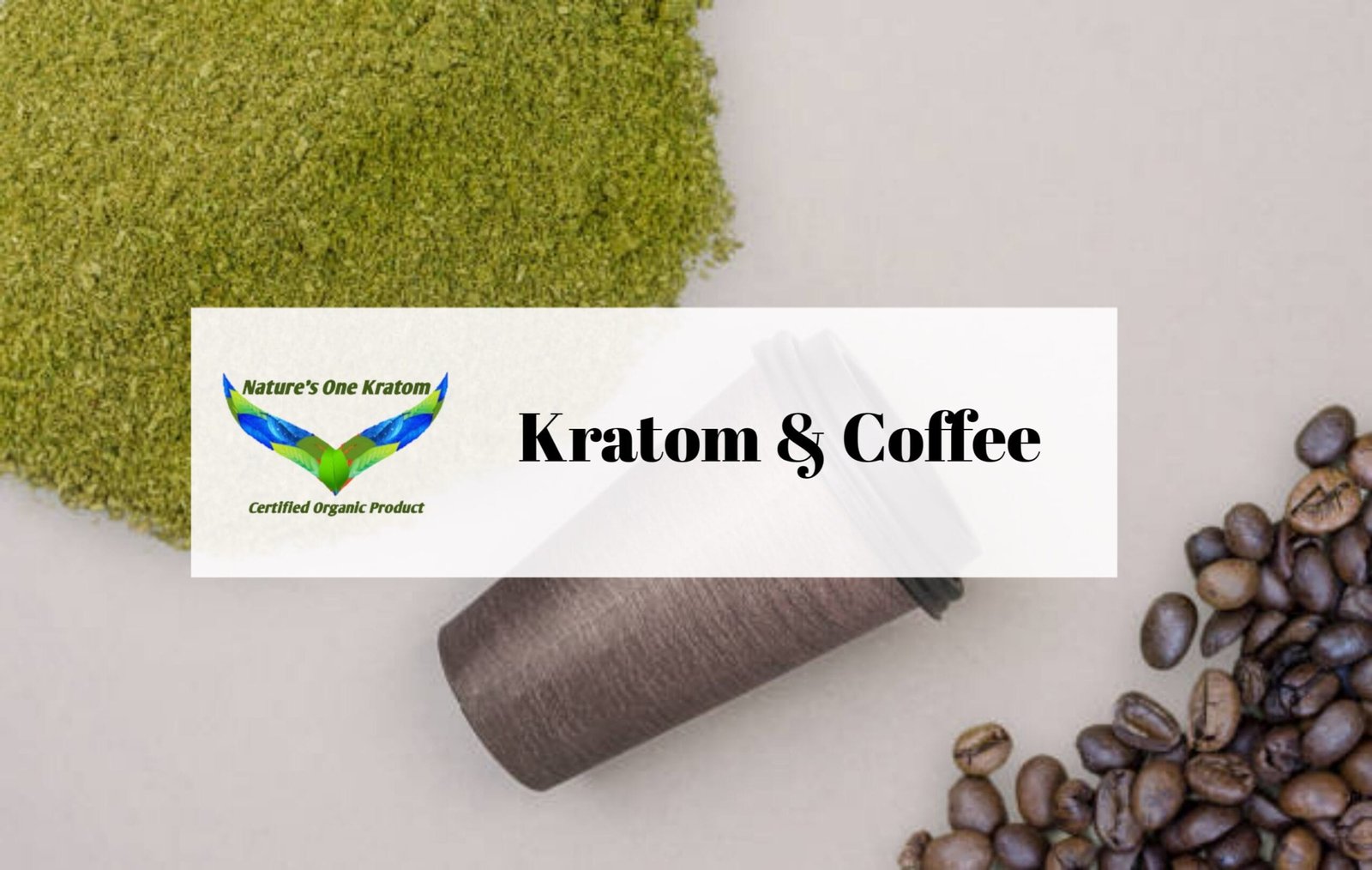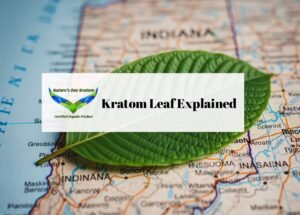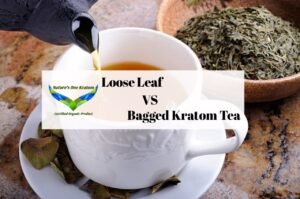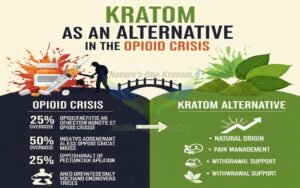No products in the cart.

We’ll explore the Kratom and Coffee Family. As you may know, both Kratom and coffee are tropical plants, each with unique properties and a rich history. This comprehensive review will cover the origins, benefits, and potential risks associated with these fascinating plants.

The Historical Use of Kratom in Traditional Medicine
Kratom, a tropical tree native to Southeast Asia, has a rich history deeply intertwined with traditional medicine. For centuries, indigenous communities have harnessed its leaves for their potent properties, using them to alleviate pain, boost energy, and enhance mood.
The leaves, often chewed or brewed into tea, served as a natural remedy for various ailments, from chronic pain to digestive issues. Beyond its medicinal use, kratom played a significant cultural role, often integrated into rituals and social gatherings.
As modern interest in herbal remedies surges, kratom’s historical significance offers valuable insights into the blend of tradition and wellness. Today, while its use sparks debate, the legacy of kratom in traditional medicine underscores the enduring connection between nature and healing practices.
Comparative Analysis of Kratom and Coffee Chemical Structures
Kratom and coffee, both popular for their stimulating effects, possess distinct chemical structures that contribute to their unique properties. Kratom, derived from the leaves of the Mitragyna speciosa tree, contains alkaloids such as mitragynine and 7-hydroxymitragynine, which interact with opioid receptors and produce both stimulating and sedative effects.
In contrast, coffee’s primary active component, caffeine, belongs to the methylxanthine class and primarily acts as a central nervous system stimulant by blocking adenosine receptors. This structural divergence not only influences their physiological effects but also shapes user experiences.
While coffee provides a quick boost in alertness, kratom’s effects can vary widely based on dosage, offering users a blend of energy and relaxation. Understanding these chemical differences is crucial for anyone exploring the benefits and risks associated with each substance.
Exploring the Alkaloids Found in Kratom Leaves
Kratom leaves, derived from the Mitragyna speciosa tree native to Southeast Asia, are rich in alkaloids that contribute to their unique effects. Among these, mitragynine and 7-hydroxymitragynine stand out, offering both stimulant and sedative properties depending on the dosage.
At lower doses, users often report increased energy, enhanced focus, and a sense of euphoria, making kratom a popular choice for those seeking an alternative to traditional stimulants. Conversely, higher doses tend to induce relaxation and pain relief, appealing to individuals dealing with chronic discomfort.
The complex interaction of these alkaloids in the body highlights kratom’s potential, yet raises important questions about safety, legality, and the need for further research. Understanding these compounds is crucial for anyone considering kratom as a natural remedy, ensuring informed and responsible use.
The Role of Caffeine in Coffee and Kratom Effects
Caffeine plays a significant role in the effects of coffee, offering a boost in energy and alertness. When consumed, it blocks adenosine receptors, reducing feelings of fatigue and enhancing focus. In contrast, kratom, derived from the leaves of the Mitragyna speciosa tree, contains compounds that act on opioid receptors, providing pain relief and mood enhancement.
While both substances can elevate mood, their mechanisms differ greatly. Coffee’s stimulating properties foster productivity, while kratom’s sedative effects may lead to relaxation. However, moderation is key; excessive caffeine can result in jitters, while overindulgence in kratom may lead to dependence.
Understanding the balance between these two can help individuals harness their benefits effectively, making informed choices for their wellness and productivity.
Different Strains of Kratom: Characteristics and Effects
Kratom, a tropical tree native to Southeast Asia, boasts various strains, each characterized by unique properties and effects. The three primary types—red, green, and white—differ in their alkaloid compositions, influencing their impact on users.
Red strains are often sought for their calming and pain-relieving effects, making them popular among those seeking relaxation and relief from discomfort. Green strains offer a balanced experience, providing both stimulation and mild sedation, appealing to individuals looking for a boost in energy without overwhelming intensity.
Meanwhile, white strains are recognized for their stimulating properties, often enhancing focus and alertness, ideal for tasks requiring concentration. Understanding these differences can help users select the right strain for their needs, ensuring a tailored experience that aligns with their desired outcomes.
How Kratom and Coffee Affect Human Physiology
Kratom and coffee, though both popular in the realm of natural stimulants, affect human physiology in intriguing ways. Coffee, with its rich caffeine content, energizes the mind, enhancing alertness and focus.
It stimulates the central nervous system, making it a go-to for many seeking a quick boost. In contrast, kratom offers a unique blend of stimulation and relaxation, depending on the strain used. While low doses can lead to increased energy and sociability, higher doses may induce a calming effect, akin to opioids.
This duality in kratom’s effects makes it a fascinating subject of study. As users navigate their choices, understanding how these substances interact with receptors in the brain can illuminate their potential benefits and risks, ultimately influencing personal well-being and productivity in daily life.
The Potential Benefits of Combining Kratom and Coffee
The combination of kratom and coffee presents intriguing potential benefits that are garnering attention among herbal enthusiasts. Both substances are known for their unique properties, with coffee providing stimulation and kratom offering relaxation.
When combined, they may create a balanced effect, enhancing focus and energy while simultaneously promoting a sense of calm. Users often report improved mood and heightened cognitive function, making this blend appealing for those seeking productivity without the jitters associated with high caffeine intake.
Moreover, the synergy between the two could lead to a more sustainable energy boost, reducing the likelihood of crashes. However, it’s essential to approach this combination with caution, as individual responses can vary significantly, and the long-term effects remain under-researched.
As interest grows, further studies will be crucial to fully understand the implications of this intriguing pairing.
Risks and Side Effects of Kratom Usage
Kratom, derived from the leaves of the Mitragyna speciosa tree, has gained popularity for its stimulant and sedative effects. However, its usage carries significant risks and potential side effects. Users often report nausea, dizziness, and constipation, which can be uncomfortable.
More concerning are the psychological effects, such as anxiety and irritability, especially with higher doses. Long-term use may lead to dependency, with withdrawal symptoms that can include insomnia and mood swings.
Additionally, since kratom is not regulated, the purity and potency can vary greatly, increasing the risk of overdose. The lack of comprehensive research on its long-term health effects raises alarms among healthcare professionals.
As the conversation surrounding kratom continues, individuals must weigh the potential benefits against the serious risks associated with its consumption.
The Legal Status of Kratom Around the World
The legal status of kratom varies significantly across different countries, reflecting a complex interplay of cultural perceptions, health concerns, and regulatory frameworks. In the United States, kratom exists in a legal gray area, with some states banning it while others allow its sale and use.
Meanwhile, countries like Thailand have embraced kratom, legalizing it for medicinal purposes after previously imposing strict bans. In contrast, nations such as Australia and New Zealand categorize kratom as a controlled substance, limiting its accessibility.
The World Health Organization has conducted reviews to assess kratom’s safety and potential for abuse, prompting ongoing debates about its regulation. As research evolves, so too does the conversation surrounding kratom, highlighting the need for informed policies that balance public health and individual freedom.
Coffee Cultivation vs. Kratom Cultivation Practices
Coffee cultivation and kratom cultivation practices present a fascinating comparison in agricultural approaches. Coffee, a globally cherished beverage, thrives in specific climates, primarily in tropical regions.
Farmers often focus on sustainable practices, using shade-grown methods to enhance biodiversity and protect ecosystems. In contrast, kratom, derived from the leaves of the Mitragyna speciosa tree, is cultivated mainly in Southeast Asia, where the climate suits its growth.
Kratom cultivation tends to be less regulated, often involving traditional farming techniques passed down through generations. While coffee plants require meticulous care and processing to achieve the desired flavor profiles, kratom is typically harvested for its alkaloid content, with less emphasis on flavor.
Understanding these cultivation differences highlights the unique challenges and opportunities each crop presents in today’s agricultural landscape.
User Experiences: Testimonials on Kratom and Coffee
User experiences with kratom and coffee often reveal intriguing insights into the benefits and challenges of these substances. Many users report that kratom provides a sense of calm and relief from anxiety, enhancing their overall mood and productivity.
Testimonials frequently highlight its potential to alleviate chronic pain, making it a popular alternative for those seeking natural remedies. On the other hand, coffee enthusiasts extol the virtues of caffeine for boosting energy and focus.
However, some individuals experience jitters or anxiety with excessive consumption. The contrast between kratom’s soothing properties and coffee’s stimulating effects creates a fascinating dialogue among users, prompting discussions about balance, moderation, and personal preference.
As more people explore these options, the testimonials continue to shape perceptions and inform choices in the realm of wellness.
The Cultural Significance of Kratom in Southeast Asia
Kratom, a tropical tree native to Southeast Asia, holds profound cultural significance in the region. Traditionally, its leaves have been used for centuries by local communities for their stimulating and therapeutic properties.
In countries like Thailand and Indonesia, kratom plays a vital role in social gatherings and rituals, symbolizing community bonding and shared heritage. Its leaves are often chewed or brewed into tea, promoting both social interaction and traditional medicine practices.
As Southeast Asia grapples with modernization, the cultural heritage surrounding kratom faces challenges, yet it remains a powerful symbol of resilience and identity. The ongoing dialogue about its use underscores the importance of understanding local customs and the delicate balance between traditional practices and contemporary health concerns.
This ongoing cultural narrative around kratom is essential for appreciating its role in Southeast Asian societies.
The Science Behind Kratom’s Pain-Relieving Properties
Kratom, a tropical tree native to Southeast Asia, has gained attention for its potential pain-relieving properties, largely attributed to its unique alkaloid profile. The primary compounds, mitragynine and 7-hydroxymitragynine, interact with the body’s opioid receptors, mimicking the effects of traditional painkillers but with a distinct mechanism that may offer a safer alternative for managing discomfort.
Research suggests that these alkaloids not only alleviate pain by blocking pain signals but also promote the release of endorphins, enhancing mood and providing a sense of well-being. As interest in natural remedies grows, understanding the science behind kratom’s effects could pave the way for further exploration and responsible use in pain management.
Comparing the Popularity of Kratom and Coffee
Kratom and coffee are two popular substances that have garnered attention for their unique effects and benefits. While coffee is widely known as a reliable source of caffeine, providing energy and enhancing focus, kratom, derived from the leaves of the Mitragyna speciosa tree, offers both stimulant and sedative properties depending on the strain.
In recent years, kratom has gained a following among those seeking alternative remedies for pain relief, anxiety, and mood enhancement. However, coffee remains deeply entrenched in global cultures, with millions relying on it for their daily routines.
The popularity of both substances continues to grow, driven by social media discussions and anecdotal experiences. As consumers become more aware of their options, understanding the differences in effects, benefits, and potential risks becomes essential for making informed choices.
The Environmental Impact of Kratom and Coffee Production
The environmental impact of kratom and coffee production raises significant concerns, particularly in regions where these crops are cultivated extensively. Both plants require substantial amounts of water and specific climatic conditions, often leading to deforestation as farmers clear land to plant them.
This deforestation disrupts local ecosystems, threatening biodiversity and contributing to soil erosion. Additionally, the use of pesticides and fertilizers in cultivation can contaminate nearby water sources, affecting both aquatic life and communities reliant on clean water.
Sustainable farming practices, such as agroforestry and organic cultivation, are essential to mitigate these impacts. By promoting environmentally friendly methods, we can ensure that the production of kratom and coffee does not come at the expense of our planet, ultimately benefiting both the environment and the livelihoods of farmers.








One comment
Pingback:
Global Kratom Trade: Markets, Laws & Export Outlook 2025 - Nature's One Kratom : Indonesia Kratom Supplier